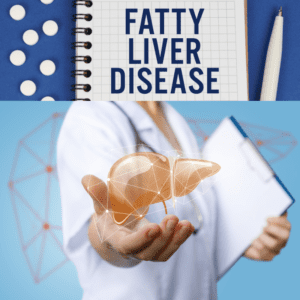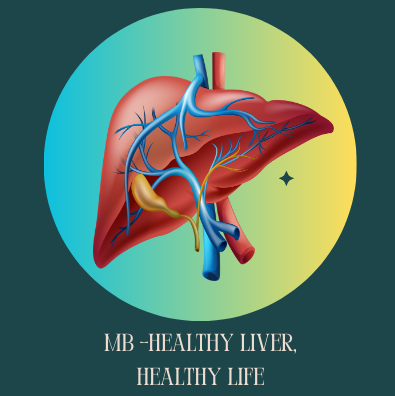Understanding hs-CRP’s Role in Alcoholic Fatty Liver Disease
 Overview: Alcoholic Fatty Liver Disease (AFLD) and biomarkers
Overview: Alcoholic Fatty Liver Disease (AFLD) and biomarkers
Finding trustworthy biomarkers for the early detection and progression of alcoholic fatty liver disease (AFLD) is crucial in the rapidly developing field of hepatology. The blood high-sensitivity C-reactive protein to high-density lipoprotein cholesterol ratio (hs-CRP/HDL-C) is a crucial indicator that is receiving more attention. Recent data points to a nonlinear association between this ratio and the chance of acquiring AFLD, pointing to intricate molecular processes underlying lipid metabolism and liver inflammation.
The Significance of hs-CRP in Liver Inflammation
The inflammatory biomarker known as high-sensitivity C-reactive protein (hs-CRP) is well-established. When there is tissue damage or systemic inflammation, the liver synthesizes hs-CRP, which causes levels to rise sharply. Chronic alcohol consumption causes hepatic inflammation in the setting of AFLD, which is frequently identified by raised hs-CRP values. Chronic inflammation progresses cirrhosis and fibrosis in addition to hepatic steatosis.
The function of HDL-C, or high-density lipoprotein cholesterol, in liver health
Known as the “good cholesterol,” HDL-C is essential for antioxidative defense, reverse cholesterol transfer, and anti-inflammatory control. Lower HDL-C levels are commonly seen in liver illness, which suggests compromised lipid metabolism and a weakened defense against alcohol-induced oxidative stress.
The Ratio of hs-CRP to HDL-C as a Composite Indicator
The hs-CRP/HDL-C ratio is a composite measure of inflammatory-lipidic imbalance, whereas hs-CRP and HDL-C offer separate insights into inflammation and lipid health. A high ratio suggests both disturbed lipid homeostasis and increased inflammation, both of which are key factors in the pathophysiology of AFLD.
The Curve of the Nonlinear Relationship: An Interpretation
The hs-CRP/HDL-C ratio and AFLD have a nonlinear relationship, according to recent research. This connection exhibits a threshold effect or J-curve/U-curve pattern rather than a straightforward linear growth, whereby
A sharp increase in the risk of AFLD is correlated with low to moderate increases in the ratio.
The risk plateaus or fluctuates after a specific inflection point, maybe as a result of physiological compensatory mechanisms or comorbidities that affect liver function.
This nonlinear dynamic implies that the ratio may have distinct effects on liver outcomes at both low and very high levels.
Mechanisms of Pathophysiology Underpinning the Association
1. Kupffer cell activation and chronic inflammation
Alcohol causes Kupffer cells, which are liver-resident macrophages that generate pro-inflammatory cytokines like TNF-α, IL-6, and IL-1β, to get activated by endotoxins. These cytokines worsen hepatic damage by inducing the synthesis of hs-CRP.
2. Lipid Peroxidation and Oxidative Stress
Reactive oxygen species (ROS) are produced when mitochondrial activity is disrupted by excessive alcohol consumption. Lipid peroxidation, impaired HDL function, and increased hepatic inflammation result from this.
3. Lipid Metabolism Disruption
Drinking alcohol inhibits fatty acid oxidation by downregulating peroxisome proliferator-activated receptor alpha (PPAR-α). Hepatic steatosis worsens as HDL-C production declines concurrently.
4. Dysregulation of the Gut-Liver Axis
Alcohol weakens the intestinal barrier, which permits endotoxemia and bacterial translocation. These conditions contribute to the inflammatory cycle of the liver and have an impact on the regulation of lipids and CRP.
Clinical Implications: Monitoring and Risk Stratification
It is possible to successfully incorporate the hs-CRP/HDL-C ratio into AFLD risk assessment models. Using it could help with:
early identification of liver inflammation that is subclinical.
tracking the course of AFLD in patients who are known to have it.
monitoring biomarker responses to customize lifestyle interventions.
predicting cardiovascular comorbidity since AFLD patients have a higher risk of cardiovascular disease.
Recommended Cut-off Values and Interpretation
While thresholds may vary by population, several studies propose the following indicative ranges:
| hs-CRP/HDL-C Ratio | Risk Category |
|---|---|
| < 0.5 | Low risk |
| 0.5–1.5 | Moderate risk |
| > 1.5 | High risk of AFLD |
It is essential to consider age, sex, BMI, alcohol intake, and comorbid conditions when interpreting these values.
Combining Other Biomarkers
The following additional parameters can be added to the hs-CRP/HDL-C ratio to improve prediction accuracy:
ALT/AST proportion
GGT, or gamma-glutamyl transferase
Ferritin
The NAFLD fibrosis score and the FIB-4 index
This multi-biomarker approach can greatly increase the AFLD diagnostics’ sensitivity and specificity.
Considerations for Prevention and Treatment
1. Changes in Lifestyle
The mainstay of AFLD treatment continues to be alcohol cessation.
CRP levels can be lowered and HDL raised by dietary strategies that support omega-3 fatty acids, fiber, and antioxidants.
2. Drug-Based Therapies
Fibrates and statins may reduce systemic inflammation and enhance lipid profiles.
Drugs that target HDL remodeling and IL-6 signaling are being developed.
3. Physical Activity and Weight Control
The hs-CRP/HDL-C ratio is optimized by moderate physical exercise, which also raises HDL-C levels and reduces systemic inflammation.
Population-Specific Factors
The association between hs-CRP/HDL-C and AFLD risk may vary in intensity and direction depending on factors such as age, gender, ethnicity, and genetic polymorphisms (e.g., PNPLA3, TM6SF2). The interpretation of this biomarker will depend more and more on personalized medicine techniques.
Prospective Research Paths
Research using longitudinal cohorts to prove causation.
Assessment of interventional tactics that alter the ratio of hs-CRP to HDL-C.
investigation of AI-based prediction models that combine genetic and imaging data with this ratio.
In conclusion
The intricate nature of liver pathology in reaction to inflammation and disruptions in lipid metabolism is shown by the nonlinear association between the hs-CRP/HDL-C ratio and alcoholic fatty liver disease. This biomarker has potential for early detection, risk assessment, and tracking treatment response in patients with AFLD as our knowledge of its function grows. Its incorporation with standard clinical evaluations may significantly improve liver care outcomes for patients.
FAQ
1. How does the hs-CRP/HDL-C ratio work, and why does it matter in cases with ADLD?
Two biomarkers are combined in the hs-CRP/HDL-C ratio: high-density lipoprotein cholesterol (HDL-C), which protects against lipid metabolism, and high-sensitivity C-reactive protein (hs-CRP), which indicates systemic inflammation. A high ratio denotes lower levels of protective lipids and greater inflammation, both of which are connected to the onset and advancement of AFLD.
2. What does it mean for this ratio and AFLD to have a nonlinear relationship?
A nonlinear association occurs when increases in the hs-CRP/HDL-C ratio do not directly and proportionately raise the risk of AFLD. Rather, there might be thresholds or turning points where minor adjustments to the ratio result in a notable rise in danger, or where additional increases might not be associated with an even greater elevation of risk.
3. In what ways may the hs-CRP/HDL-C ratio support AFLD monitoring or early detection?
In patients at risk of alcohol-induced liver injury, monitoring the hs-CRP/HDL-C ratio can aid in the early detection of lipid and inflammatory abnormalities. This ratio is a valuable tool for treatment monitoring and preventive care since it may give physicians insights into the course of the disease when it is regularly tracked.
4. Can alterations in lifestyle impact the hs-CRP/HDL-C ratio and lower the risk of AFLD?
Indeed. The hs-CRP/HDL-C ratio can be decreased by lowering alcohol use, consuming an anti-inflammatory diet, increasing physical exercise, and reaching a healthy weight. The risk or progression of AFLD can be considerably reduced by these modifications.
5. Can AFLD be diagnosed just using the hs-CRP/HDL-C ratio?
No, even if the hs-CRP/HDL-C ratio is a useful biomarker, it should be used in conjunction with other clinical evaluations, including imaging (FibroScan, ultrasound), liver function tests (LFTs), and patient history. As part of a thorough liver evaluation, it improves the precision of diagnosis and surveillance.
 https://analytics.google.com/analytics/web/#/analysis/p405220706
Skip to content
https://analytics.google.com/analytics/web/#/analysis/p405220706
Skip to content 

1 thought on “Understanding hs-CRP’s Role in Alcoholic Fatty Liver Disease”